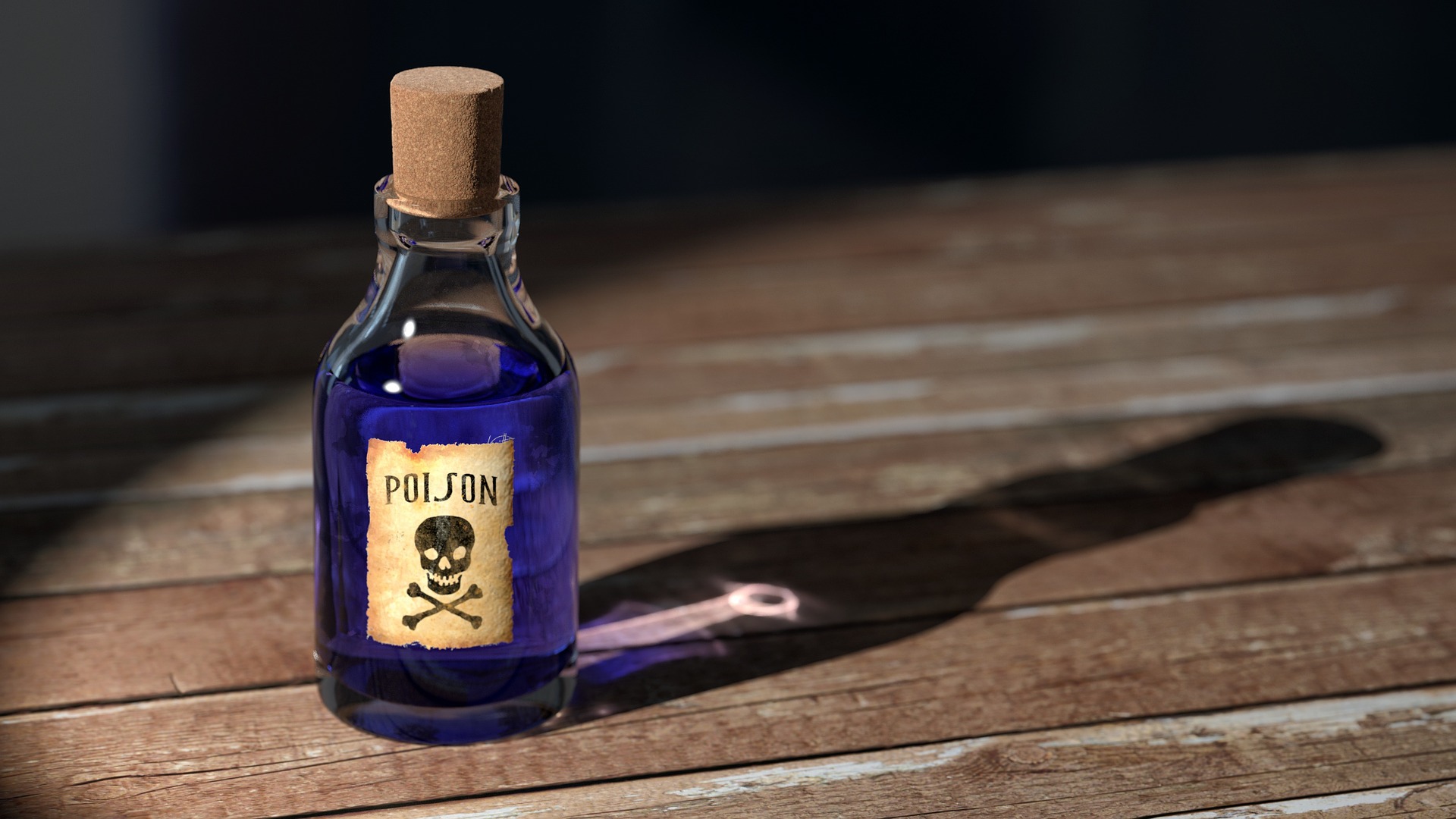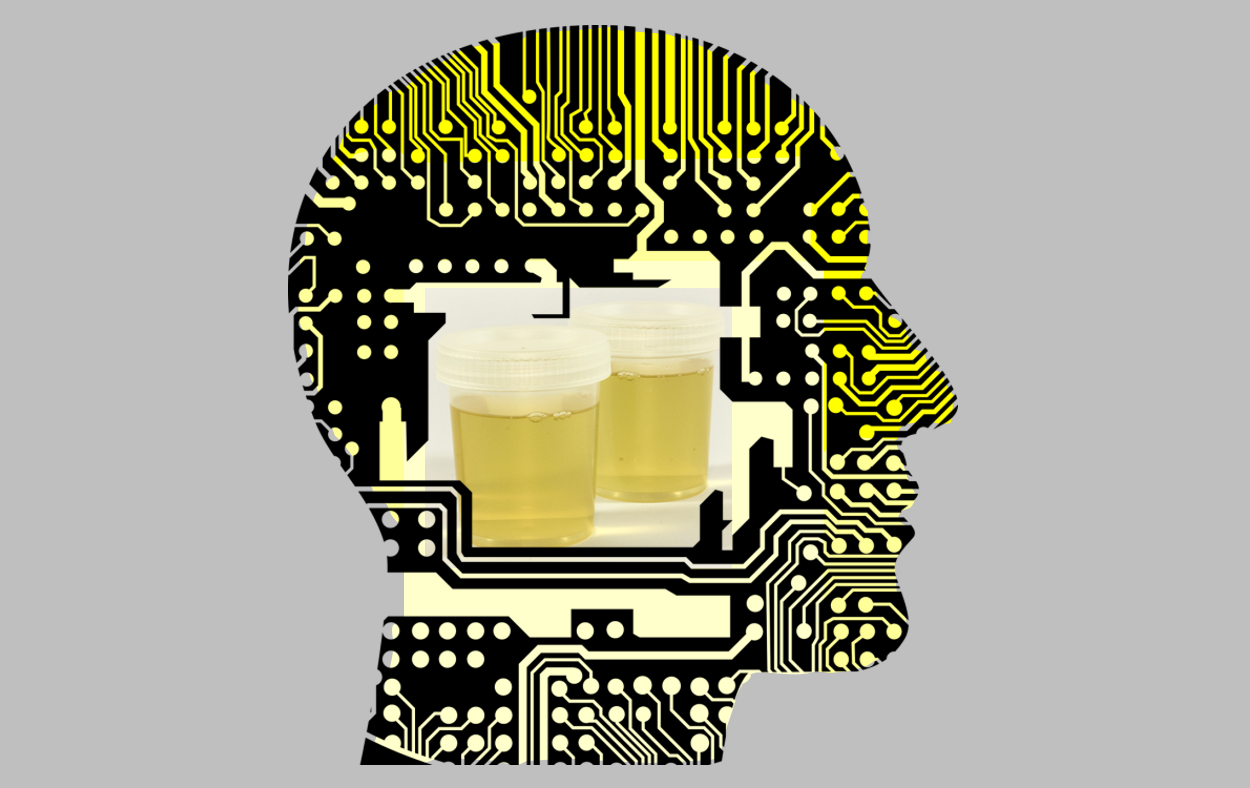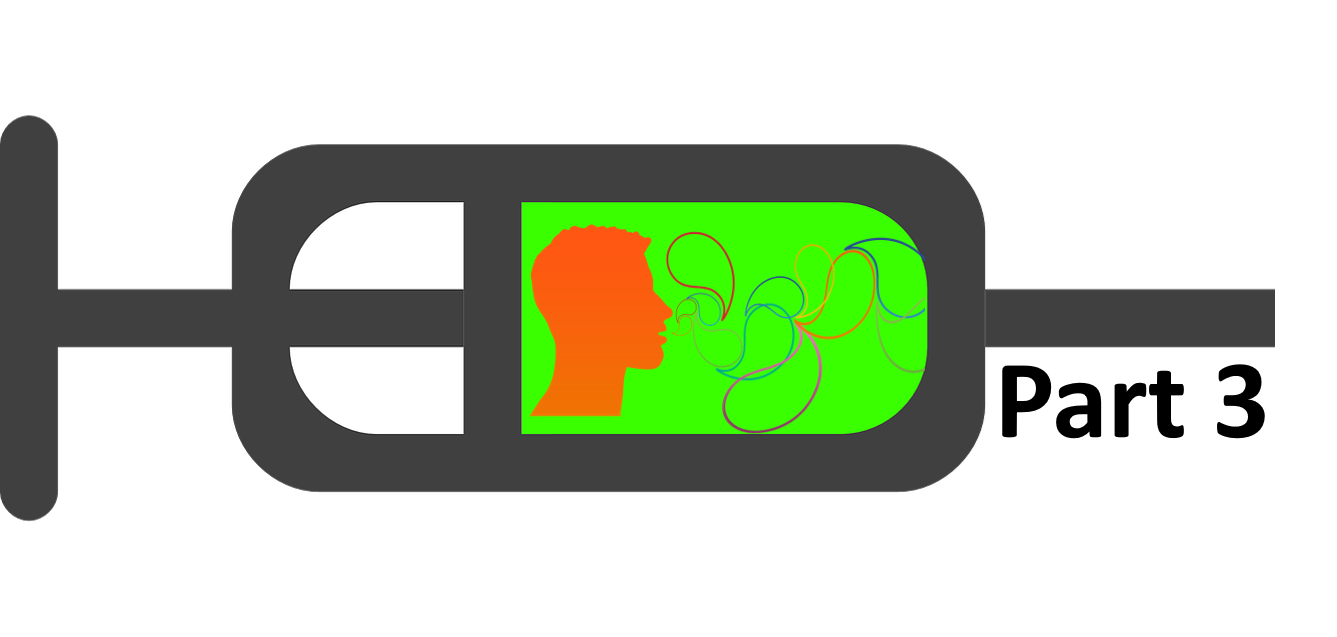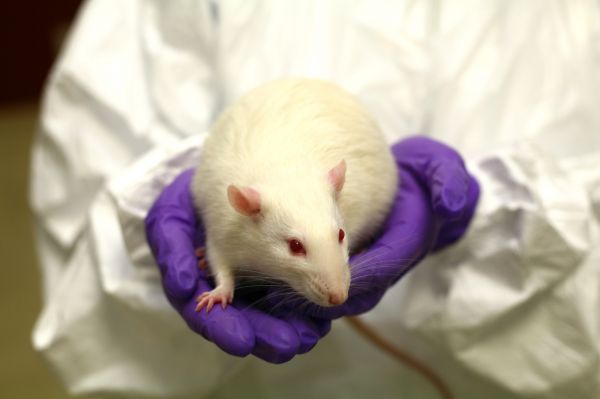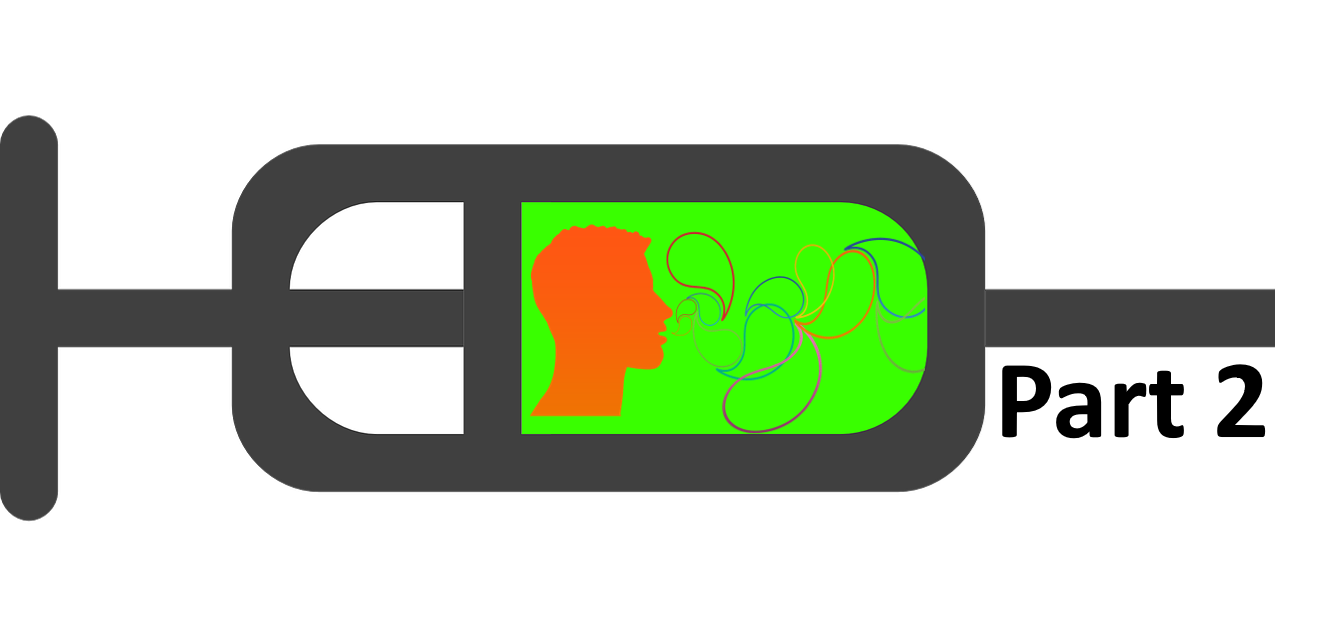Welcome to Ask a Scientist, where we answer questions from our readers on a wide range of scientific topics. Got a scientific question? Drop us a line.
Does being cold really make you sick, or is that just an old wives tale? – M.H. Woolwich, ME.
Thanks for the question, M.H. You hear this one all the time – is it true?
The short answer is no. “Sick” in this context is generally assumed to mean the flu or the common cold. The cause of these diseases are viruses – influenza virus and rhinovirus, respectively. You cannot catch a cold or the flu without being exposed to these viruses, no matter now cold you get – even if you go out without a jacket, or don’t wear a hat, or forget your mittens. Now, if you get really really cold, and your core body temperature drops below 95°F (normal is 98.6°F), that’s called hypothermia, which can be very dangerous. If you classify hypothermia as “sick”, then I guess the old saying is true, but not if you are just talking about catching a cold or the flu.

There is a long answer too, and it’s… kinda. While being cold doesn’t make you sick, two side effects of cold weather make it easier for viruses to infect you. The first is the low humidity associated with low temperatures (and indoor heating systems), which dry out the mucus membranes of your nose, making it more susceptible to infection. The second is that cold weather tends to make people spend more time indoors in close contact with other people, where they are more likely to spread viruses.
A few years ago, a group of researches at Yale University also demonstrated that cells and mice at lower temperatures have a more difficult time fighting off viruses. It’s not entirely clear if this same effect occurs in humans, and if so, how much it might increase the odds of someone catching a cold or the flu, but it’s pretty cool.
Also, the author’s assumption is that cold air in your lungs and airways was the culprit here. When you think about this, it means that going out in the cold might increase your chances of catching a cold or the flu regardless of how cold a person might actually feel. In other words, even if you are bundled up in a coat, hat, scarf, and mittens, you are still breathing the same cold air when you go outside, so your risk of getting sick would be unaffected by how you dress or how cold you actually felt. The same is true for the effects of low humidity in cold weather.
So in the end, even if cold weather might fundamentally increase your risk of getting sick, being cold (or not dressing warmly enough) will not. The best thing you can do is wash your hands, avoid friends and family who are sick, and of course, get the flu vaccine.

You’ve probably heard of essential oils. They are commonly used in aroma therapy, but some people also recommend that essential oils be applied topically (to your skin) or ingested (alone or used as ingredients in food). What exactly is an essential oil, are they good for you, and are they safe? Here’s the skinny.
What is an essential oil?
An essential oil is an extract from a plant. Specifically, it is a mix of volatile chemicals (chemicals with a low boiling point) that are extracted using distillation or solvents. The term “essential” in this case refers to the “essence” of the plant in question – a nod to that fact that essential oils from a given plant generally smell and/or taste like that plant. The essential oils from citrus fruit, for instance are generally very citrusy (which is a real word). “Essential” in this context does not mean that these oils are essential for life or good nutrition – you do not need essential oils in your diet. They are called oils because they are generally hydrophobic (they don’t mix with water), but they do not generally resemble the non-volatile oils we are used to interacting with, like cooking and fuel oils.
 Because essential oils are prepared by distilling or extracting plant material, their actual content will depend on the plants they are produced from and the exact process used to extract them. Essential oils contain hundreds or thousands of different chemicals. While essential oils from the same type of plant made by different manufacturers will be similar, they can vary quite a bit, and no two extracts are likely to be exactly the same. There are also no government regulations controlling how these extracts are produced, or how pure the oils should be. It’s basically “let the buyer beware.”
Because essential oils are prepared by distilling or extracting plant material, their actual content will depend on the plants they are produced from and the exact process used to extract them. Essential oils contain hundreds or thousands of different chemicals. While essential oils from the same type of plant made by different manufacturers will be similar, they can vary quite a bit, and no two extracts are likely to be exactly the same. There are also no government regulations controlling how these extracts are produced, or how pure the oils should be. It’s basically “let the buyer beware.”
Welcome to Bad Science on the Internet! Here, we highlight some of the crazy and sometimes dangerous stuff people post online, and then we give you the facts.
The Bad Science:
Several retailers sell something called miracle mineral solution for the treatment of numerous ailments, including malaria, HIV/AIDS, the flu, autism, and cancer. It’s also known as master mineral solution, MMS, the CD protocol, or CDS. There’s a whole book about how great it is!
Are they trying to sell you something?
Of course.
Does it work?
MMS DOES NOT WORK. FOR ANYTHING. DON’T TAKE IT. EVER.
Is it dangerous?
It sure is! MMS is made by adding sodium chlorite to acidic water, which produces chlorine dioxide, which is bleach. Yes, ITS MADE OF BLEACH.
Generally, it is recommended that you drink MMS, which its just as dangerous as it sounds. Drinking bleach will cause nausea, vomiting, and (if you drink enough) death. The bottle of bleach in your basement has a warning label on it telling you not to drink it. MMS is no different, in fact, it’s more powerful than the bleach you buy in stores. It’s Super Bleach!
Look, most people know instinctively not to drink bleach, but just to put it in context, here’s how chlorine dioxide stacks up with other nasty stuff in terms of acute toxicity, as measured by the average lethal doses (LD50’s) in rats.
Glyphosate (active ingredient in Roundup herbicide) = 5,600 mg/kg
Formaldehyde (carcinogen used to preserve bodies) = 500 mg/kg
Chlorox bleach (hypochlorite) = 192 mg/kg
Thiopental sodium (used for lethal injections) = 117 mg/kg
Chlorine dioxide (ingredient in MSS) =94 mg/kg
Cyanide (rat poison) = 1.5 mg/kg
So the active ingredient in MSS is more toxic than glyphosate, formaldehyde, “regular” bleach, and the stuff they use in lethal injections. On the plus side, it’s not quite as bad as eating rat poison, so there’s that.
There is also a small group of people who believe that if MMS is given as an enema it can cure autism. This is absolutely not true, and is just as dangerous as you might think a bleach enema would be. There is no cure for autism. If anyone tells you there is, they are lying to you.
If it doesn’t work and is so dangerous, why is it available on Amazon.com?
The idea of using MMS to treat disease was “invented” by a guy named Jim Humble, who left the church of Scientology (presumably because it wasn’t crazy enough) to found what he calls the Genesis II Church of Health and Healing, which promotes the use of MMS to treat disease. Jim claims to have discovered MMS when he was in Africa in the 1990’s and used it to treat his malaria. He self-published a book, and a small, dangerous community of adherents have been touting it’s benefits ever since. Besides the unsupported ramblings of Jim Humble and his followers, there is not a shred of scientific evidence supporting the efficacy of MMS, and a whole bunch of evidence telling us that drinking and “cleansing” with super bleach is incredibly dangerous.

The governments of the United States, Canada, the United Kingdom, Australia, and others have all issued warnings against the use of MMS, and there have been several cases in the US of the government filing criminal charges against people offering MMS for sale as a medical treatment and shutting them down. This makes sense – unlike a lot of other fake “alternative” medical treatments, MMS is extremely dangerous, and profiting off of false claims about it’s nonexistent health benefits is a crime in most countries. People have died from MMS.
Maybe the idea of “cleaning” our insides makes sense in some basic way. It would be great if we could bleach our bodies clean like we do our kitchens, but that is not the world we live in. If you drink enough of this stuff, or squirt enough of it up your butt, it will kill you. Even if it doesn’t kill you, the malaria, autism, HIV, cancer, whatever you were using it for, will still be there.

Welcome to Ask a Scientist, where we answer questions from our readers on a wide range of scientific topics. Got a scientific question? Drop us a line.
Is urine really sterile? Can you use it to disinfect things? – SF, The Woodlands, TX
Thanks, SF! Let’s talk about pee!
The answer to your first question is a very clear “no.” Urine is not sterile. Sure, it’s sterile as when it’s first made in your kidneys, but then it passes through your urethra, and like pretty much every part of you that comes in contact with the outside world, your urethra contains bacteria, and some of them end up in your urine. In some cases (like urinary tract or bladder infections) the bacterial levels can be quite high, but in general they are low – not sterile, but probably safe enough to drink, at least from a bacterial contamination standpoint. However…
It’s never a good idea to drink your own urine. Some survivalists say they have done it, including that guy who had to cut off his own arm in Utah after getting pinned under a boulder, but it’s probably not something he made a habit of – and for good reason. While urine is 95% water, the other 5% is stuff that is not good for you. This 5% contains urea, excess electrolytes and other stuff your body is trying to get rid of. To put this in context, salt water from the ocean contains about 96.5% water with 3.5% salt. If you drink salt water, the salt just dehydrates you, defeating the purpose of drinking water in the first place. Over time, if you drink enough of it, seawater can kill you. Urine will do the same thing, only it is also full of urea and other body waste products and is totally gross. Don’t drink urine, ever.
You’ve probably seen the stories, juries awarding people millions of dollars because they developed cancer after years of using talcum powder. Does talc really cause cancer? Should you stop using baby powder? Is it time to panic? What the deal? Let’s talk talc.
What is Talc?

Talc is a mineral, also called talcum, or magnesium silicate. It Is mined directly from the ground in places like Australia and France, and processed for use in many consumer products. Talc is used for a whole lot of things. It is commonly found in plastics, cosmetics, paint, rubber, and ceramics. Because it’s good at absorbing water, it is used in baby powder and in the “chalk” that keeps basketball players or rock climbers hands dry. Because of it’s high shear strength, it’s often used as a solid lubricant. It’s even approved for use as a food additive and a inactive ingredient in pharmaceutical tablets in most countries. Talc is everywhere.
The link between talc and cancer
The link between talc and cancer has been the subject of intense research for many years. Most of the early focus was on it’s role in causing lung cancer in people who breath it in – particularly people that work in talc mines. Several large studies have been run, and the results have been mixed – some show a link between lung cancer and working in talc mines, while others don’t. However, regardless of the outcomes, these studies are generally recognized as inconclusive because of two major confounding factors. The first is that talc generally forms under similar conditions to asbestos, and can therefore be right next to, or even mixed in with asbestos when it is mined. The other confounding factor is radon – a radioactive breakdown product of Uranium which can build up in enclosed spaces below ground (like your basement). Both asbestos and radon very clearly cause lung cancer, so it’s hard in scientific studies to tell if talc is causing cancer or if it’s just exposure to asbestos and radon that is the problem.
Welcome to part 3 of our series on how to talk to your friends and family who hold anti-science views on vaccine safety. Click here for part 1, and part 2, which covered the benefit/risk of childhood vaccines, reliable sources of data, and conspiracy theories. Now on to part 3.
PART III: Misunderstanding science and/or over-simplifying how science actually works
Science can be complicated. Fully grasping the basics of a single field of study can take a lifetime. Most of the anti-vaccine arguments you will hear do not stem from bad science. Instead they come from the mistakes outlined in our previous posts – misunderstanding the risk/benefit profile of vaccines, trusting bad data, or believing in conspiracy theories.
Anti-vaccine arguments based on science are the easiest to refute given time, but they are often the hardest to refute in the moment. If someone pulls out an obscure research paper that you haven’t read before as evidence that vaccines are dangerous, a good scientist needs to take the time to read it in order to refute it. This is a big reason why we at UYBFS don’t like to try to argue science in the comments section of Facebook posts. In order to get our science right, we often need to do research – that’s how science works.
With this said, most anti-vaccine scientific claims fall into several general categories – seven by our count. Let’s go through each with some examples from the anti-vaccines posts from our recent Science humor Facebook post (see part 1).
1) Misunderstanding basic science.
This one is pretty straight forward. Scientific misconceptions are everywhere, and getting the basics of science wrong can lead to faulty conclusions. Here are some examples:
“If you look at what caused polio it sure as hell was’nt [sic] apples. So it was caused by toxins in the environment, ddt etc”
Polio is caused by a virus, not by toxins or pesticides.
“If you’d like, I also cite studies that show that cell denovo replication can be affected by damage to certain proteins caused by febrile seizures and axonal stretch injury.”
These words literally mean nothing in the order above. It sounds smart, but it’s nonsense.
“Hmmm, she gets vaccinated to protect herself, but if I’m not vaccinated then I can spread my virus to her? How does that work, exactly, if this vaccination you speak of actually does anything?”

This is an important principal of immunity that the author of this comment seems to have completely missed. Vaccines are not 100% effective – no medication is. In a small number of vaccinated persons, the vaccine won’t work. This generally happens when there is an inadequate immune response to the vaccine (driven by biological chance or a suppressed immune system) or because the person’s immune system is compromised at the time of infection and unable to response despite the vaccine.
Let’s say this happened to your child – they were vaccinated against measles, but it just didn’t work. If every other child in their class was vaccinated, their risk of contracting measles is still very low – because no one else in their class would have measles due to the vaccination. If however, several kids in their class weren’t vaccinated because their parents didn’t understand this concept, they could catch measles, and measles can be fatal. This is called “herd immunity.” It’s ok if a small percentage of people fail to develop immunity following vaccinations, as long as the rate of vaccination is high among their peers.
“I still haven’t read one good reason for hepb shot , and the ‘vitamin’ k shot at birth. Other than to thwart the immmune system or constitution. The facts are that people [sic] pineal glands are being filled with fluoride which is caused by the mercury. The pineal gland is our holy grail if you like, our internal antenna.”
The author of this comment clearly has no background in science. The reasons for the hepatitis B vaccine (hepb) and vitamin K shot at birth are self-explanatory. Fluoride does not “fill” your pineal gland – if you take too much of it, it goes into your bones. We are not sure if they are inferring that mercury “causes” fluoride (that makes no sense), or if it causes fluoride to “fill” your pineal gland – which it does not. The pineal gland produces melatonin, which helps regulate your circadian rhythm, which we guess is like an antenna, somehow? Finally using the word “constitution” as a medical or scientific term is a classic red flag. This term means nothing at all in modern evidence-based medicine – don’t trust the opinions of anyone who uses this word incorrectly.
2) Misunderstanding data
Here are some published studies that one commenter linked to as supporting evidence of a lack of vaccines safety:
Non-linear dose-response of aluminium hydroxide adjuvant particles: Selective low dose neurotoxicity. This is a cool study because in pharmacology and medicine, a classic dose-response relationship (higher dose = a greater effect) is usually taken for granted. The authors didn’t observe that here, which is SUPER interesting, but not useful as a basis for human risk assessment. Mice are not little people – data generated in mice needs to be understood mechanistically before it can inform risk.
Evidence Concerning Pertussis Vaccines and Central Nervous System Disorders, Including Infantile Spasms, Hypsarrhythmia, Aseptic Meningitis, and Encephalopathy. This is another really nice study, and it’s clear that the person who posted it didn’t read beyond the title. The authors found no link between the DPT vaccine and any of these disorders.
3) Trusting the wrong data or Confusing science and propaganda

“There is considerable evidence from human studies implicating ultrasound. Parents in the US are not being given this information.”
The author actually linked to a Chinese book on this topic available through Amazon. Literally every baby born since the 1970’s has been exposed to ultrasound – it’s perfectly safe and every doctor and scientist will tell you this, but this person is going with the opinion form a non-peer-reviewed Chinese book available for $9.99 on Amazon with the following product description:
“Ultrasound is argued, with much supporting evidence, to be the primary initiator of fetal vulnerabilities. The Bibliography lists and discusses arcane documents, previously unknown, modern, high-tech studies, conducted in modern China, surpassing Western science. These studies empirically demonstrate ultrasound disease causation.”
That is some next-level gibberish right there.
So how does this happen? Why would someone believe such a clearly untrustworthy source over pretty much every scientist and health professional in the world? This is a difficult question to answer. People likely believe clearly fake information like this for the same reasons that people believe non-scientific fake news. Many hypothesize that the desire to “know” or reinforce things they believe already drives people to ignore obviously fake information sources. Research also shows that many people have a difficult time recognizing false or biased information, especially when it comes from social media.
This topic is related to the conspiracy theory discussion from part 2: it’s important to understand that there is bias inherent in many of our information sources. As such, we should always be skeptical of any scientific information we read and seek to confirm it from unbiased sources. Peer-reviewed journals are a great source of “unbiased” data, but data published in this way is generally not written for non-scientists and can be misinterpreted by those without proper training. Other good sources include the news sites of the high end scientific journals Science and Nature, Science News, and Sciworthy. Avoid sites that are heavily politically biased in either direction.
4) Over-interpreting data
Here are a few peer-reviewed publications posted in the Facebook comments. Each is a solid study, but the person who posted these links seemed to think they “proved” that vaccines are unsafe. They do not.
B-Lymphocytes from a Population of Children with Autism Spectrum Disorder and Their Unaffected Siblings Exhibit Hypersensitivity to Thimerosal. There is no link between mitochondrial defects and autism, which pretty much disproves this hypothesis.
Hypothesis: conjugate vaccines may predispose children to autism spectrum disorders. Large, well-controlled sudies consistently show no link between vaccines and autism. There is only correlation and no causation here (see below).
Transcriptomic analyses of neurotoxic effects in mouse brain after intermittent neonatal administration of thimerosal. Changes in gene expression are not necessarily adverse, and this study used thimerosal levels 20-times higher than used in vaccines.
It may surprise some people to find studies clearly looking for a connection between vaccines and autism in the published literature, but it shouldn’t. This is how science works. After Andrew Wakefield published his falsified (now withdrawn) paper claiming a link between vaccines and autism, scientists around the world have looked into the issue. Some of this data, when over interpreted or taken out of context might seem to suggest a link between vaccines and autism, but the totality of the data tells a very clear story. Outside of the discredited work of Dr. Wakefield, there is no evidence of such a link.
5) Mistaking correlation for causation

“the exponential rise in autism linked to high rates of aluminium in the brain.”
No causal connection has been identified.
“The US has by far the highest rate of infant mortality in the industrialized world–higher even than many Third World nations. The US also administers the most vaccines to children under 2 years old. These issues are connected.”
Nope. Did you know that if you eat enough chocolate you will definitely win a Nobel Prize? correlation does not equal causation.

Abnormal measles-mumps-rubella antibodies and CNS autoimmunity in children with autism. There is no data at all suggesting that these antibodies cause autism.
Do aluminum vaccine adjuvants contribute to the rising prevalence of autism? Again, a correlation without any evidence at all of a causative link between aluminum and autism.
6) Failing to recognize how data fits into the evolution of the field
This is a big one, since science evolves as more data is generated. There was a time, in the the 1990’s when much of the scientific community considered it possible that vaccines were indeed linked to autism. However, after the work by Dr. Andrew Wakefield was disproven and withdrawn from publication due to fraud, this changed. Today, you won’t find reputable scientists who believe there is any sort of ink between vaccines and autism, or who question the extremely high benefit-to-risk ratio of childhood vaccinations. Citing the work of Dr. Wakefield or early work in the field before a scientific consensus was reached is not an argument against vaccines – it’s just out of date information.
7) Not actually listening to the other side
 Science should never be about winning or losing an argument. It’s about seeking truth. It is important to always be open to considering that your position may be incorrect, and even more so if that position is held by the vast majority of experts in a particular field. Unfortunately, some people are just not ready to listen:
Science should never be about winning or losing an argument. It’s about seeking truth. It is important to always be open to considering that your position may be incorrect, and even more so if that position is held by the vast majority of experts in a particular field. Unfortunately, some people are just not ready to listen:
“Lol congrats. I appreciate the response and refutation with citation. But I have many many more hahaha so I’m glad I can take these ones that you have refuted out of my list.”
So I guess this person’s plan is just to keep on lining up “evidence” to support his side without considering that with each refutation their position is more and more untenable?
“Considering I am currently taking my Bach of science, I think I have a tiny bit more knowledge in this area than you do. Thanks for playing! Don’t let the Door hit your ass on the way out”
This one hurts me. Every scientist starts here – you learn a little bit and think you know everything. Good scientists take the next step and realize they know very little. Then they can really learn. It doesn’t sound like this person is ready to learn just yet.

Animal research is critical to the understanding of how and why diseases happen, and the development of safe and effective medicines. In fact, the American Medical Association acknowledges “virtually every advance in medical science in the 20th century, from antibiotics and vaccines to antidepressant drugs and organ transplants, has been achieved either directly or indirectly through the use of animals in laboratory experiments.” So, not just one or two things, or even a handful. Virtually everything.
 But, despite that, animal research is not an easy topic to write about. It’s emotive. Animal rights organizations control the rhetoric, and the images they portray of animal research are horrific. And yet these are the images that people are most likely to see, because fear of personal and institutional attacks by animal activists has driven animal research to be hidden. The ”real” story is never shared. Researchers, institutions and companies inadvertently belittle the significant contribution of animals to scientific progress by trying to hide that they’re even involved in it.
But, despite that, animal research is not an easy topic to write about. It’s emotive. Animal rights organizations control the rhetoric, and the images they portray of animal research are horrific. And yet these are the images that people are most likely to see, because fear of personal and institutional attacks by animal activists has driven animal research to be hidden. The ”real” story is never shared. Researchers, institutions and companies inadvertently belittle the significant contribution of animals to scientific progress by trying to hide that they’re even involved in it.
So what’s the result, when the only view of animal research displayed to the general public is negative? The general public say they don’t support the use of animals in research. And it’s not surprising – they don’t hear about the positives, and the images they do see are courtesy of the animal rights organizations, and they seem to show animals being tortured. Who says “Yeah, that’s fine,” when they’re presented with images like that? Sociopaths, that’s who.
So why am I involved in this debate? Well, I am a toxicologic pathologist. I work in the pharmaceutical industry. I have a degree in veterinary medicine and worked as a veterinarian in clinical practice before I did a PhD and a specialist qualification in pathology. As a toxicologic pathologist, my job is to assess how safe new medicines are in animals before we give them to people. After we have given the animals a course of the medicine we are testing, the animals are humanely euthanized (in the same way your pet would be put to sleep by a veterinarian if it was very sick), and I examine samples of their organs to determine if there has been any damage from the medicine we are testing – a regulatory step imposed by governmental agencies worldwide to ensure that pharmaceutical companies are doing their job to bring safe and effective medicines to patients. From there, we can decide whether the new medicine is safe to test in human patients. I’m not talking about seeing if a new mascara will make your eyes water, I’m talking about medicines – medicines that will (hopefully) cure your cancer, prevent you from going blind, or treat your asthma.
Welcome to part 2 of our series on how to talk to your friends and family who hold anti-science views on vaccine safety. Click here for part 1, which covered the benefit/risk of childhood vaccines. Now on to part 2.
PART II. Conspiracy theories and trusting the wrong sources of vaccines safety data
In order to understand the risks involved in vaccinations, we need to understand the side effects that occur after vaccinations, and the rate at which thee side effects occur. We covered vaccine side effects in part 1, so where did we get our data? This is critical – much of the confusion and false information surrounding vaccine safety comes from people who try to research the topic, but choose unreliable sources for their data – incomplete data sets, self-serving summaries from people with an anti-vaccine agenda, or just plain poor science. So where can you access vaccine safety info? Here are the best non-biased options:
The CDC website has specific safety information for many of the most common childhood vaccines as well as some background data on common concerns, vaccine safety research, and the methods used to track vaccine safety. This is probably the best one-stop shop to learn about vaccine safety.

For specific vaccines, the drug label is required to contain all the pertinent safety data, including side effects and rates of side effects from the controlled clinical trials run in order to demonstrate an acceptable risk/benefit ratio for FDA approval. Just google the vaccine name and the word “label” and look for a .pdf file with “label” or “package insert” in the name. Keep in mind that these labels have to include all adverse side effects seen on the clinical trials – even those that were very rare or for which a direct link to the vaccine has not been established. These labels may require some background in medicine or science to read and interpret.




